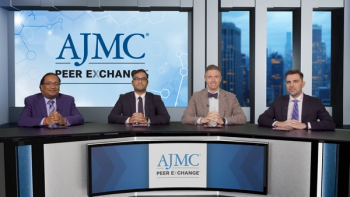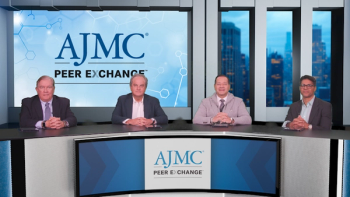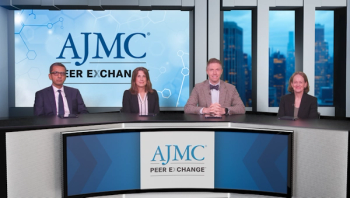
STEER Data Open Door to SMA Gene Therapy for Wider Age Range of Children
Key Takeaways
- The STEER study showed significant motor function improvement in children with SMA using intrathecal onasemnogene abeparvovec.
- The primary efficacy endpoint was met with a 2.39-point improvement in HFMSE scores in the treatment arm.
Delivery of onasemnogene abeparvovec into the intrathecal space was safe and effective for children with spinal muscular atrophy (SMA) aged 2 to 17 years, who had previously been shut out of receiving gene therapy.
Results from the phase 3 STEER study of intrathecal onasemnogene abeparvovec showed encouraging efficacy and safety data for children aged 2 to 17 years with
Onasemnogene abeparvovec (Zolgensma; Novartis) has been
Seeking to expand the use of onasemnogene abeparvovec, researchers undertook the STEER study (
Proud noted that participants had to be treatment naïve and to be able to sit independently, but they had never been ambulatory. Of the 136 participants, 126 received either this intervention (n = 75) or a sham procedure (n = 51). The participants ranged in age from 2.1 to 16.6 years, and the mean age at dosing was 5.88 years.
After 52 weeks, the study met its primary efficacy end point, with the treatment arm demonstrating a 2.39-point improvement in the Hammersmith Functional Motor Scale – Expanded (HFMSE) score vs 0.51 points in the sham arm (P = .0074). The HFMSE is a validated scale used to assess patients’ motor function, including motions like standing, crawling, and sitting; recent research suggests that a
Exploratory efficacy analyses in the subgroup 5 years and older also favored the treatment arm, with a 2.45-point treatment effect on HFMSE (P = .0193) and a 1.72-point on the Revised Upper Limb Module (P = .033).1
Safety analyses revealed adverse event rates that were similar between the 2 arms; pneumonia and vomiting were the most prevalent serious adverse events in the treatment arm whereas pneumonia and lower respiratory infection were most common in the sham arm. “Peripheral sensory neuropathy presented in 2 cases, with symptoms managed with additional therapies, and improvements were seen over time,” Proud noted.
“The Hammersmith from an efficacy perspective demonstrated improvement of motor function in this very broad SMA patient population,” Proud concluded. “The primary end point was met with a mean difference of 1.88 points between the treatment and sham groups, and overall, the safety profile was favorable.”
The second period of STEER will involve the sham and treatment arms crossing over for an additional 12 weeks, after which the participants will be eligible to enroll in a long-term follow-up study.
If these results lead to a label expansion for onasemnogene abeparvovec to include children older than 2 years, payers will have to grapple with the implications of covering the high-priced gene therapy for a much larger pool of patients, and treatment centers will need to adjust their workflows and infrastructure to keep up with presumed demand.
References
1. Proud C, Wilmshurst JC, Sanmaneechai O, et al. Intrathecal onasemnogene abeparvovec for patients with spinal muscular atrophy: phase 3, randomized, sham-controlled, double-blind STEER study. Presented at: 2025 MDA Clinical & Scientific Conference; March 16-18, 2025; Dallas, TX. Abstract LB450.
2. Rosenberg J. FDA approves gene therapy with $2.1M price tag for spinal muscular atrophy in pediatric patients. AJMC®. May 24, 2019. Accessed March 19, 2025.
3. Coratti G, Bovis F, Pera MC, et al; ISMAC group. Determining minimal clinically important differences in the Hammersmith Functional Motor Scale Expanded for untreated spinal muscular atrophy patients: an international study. Eur J Neurol. 2024;31(8):e16309. doi:10.1111/ene.16309
Newsletter
Stay ahead of policy, cost, and value—subscribe to AJMC for expert insights at the intersection of clinical care and health economics.







































